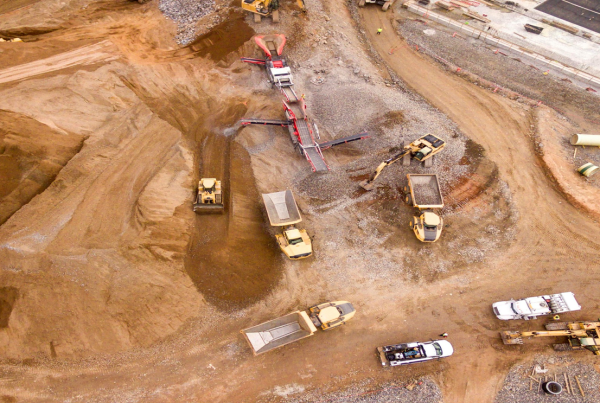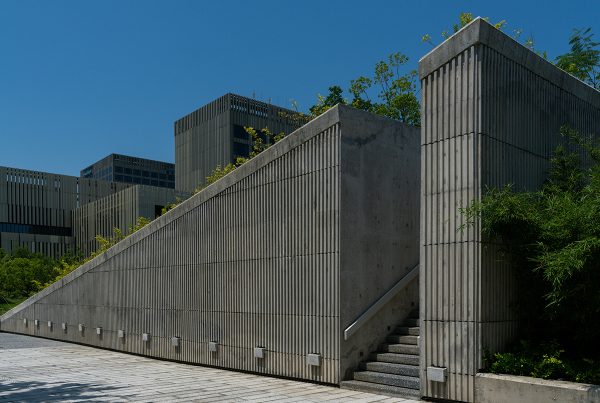With the pandemic highlighting the need for healthy building environments, there has been, and continues to be, a huge increase in knowledge and awareness on what buildings are expected to provide in order to be considered healthy and safe places to live and work. With this increase in knowledge comes increased expectations on both tenants and landlords to ensure that indoor spaces can minimize the risk of viral infections taking place. Non-compliance with common expected standards, however loosely defined, can come at a high cost to either party. As a result, tenants and landlords need to consider the contractual and legal implications of viral transmission events taking place in their spaces and the repercussions they may incur as a result.
Lessons learned during COVID-19:
After extensive scientific research, the WHO acknowledged three possible main modes of viral transmission:
- Contact or droplet transmission
- Airborne transmission
- Fomite transmission (contaminated surfaces)
From this, several measures were taken during the outbreak to reduce the risk of spreading the infectious disease – which are well documented in several guidelines provided by industry leaders and health organizations such as the Strategies from the WELL Building Standard to Support in the Fight Against COVID-19.
Evidence-based strategies such as mandatory use of face masks, thermal scanning, increased cleaning and disinfection procedures, promotion of hand washing, flexible work arrangements, and social distancing (among others) are heavily recommended to reduce the risk of viral transmission and keep business running. However, a measure that is often underestimated, especially in confined spaces, is the provision of fresh air to reduce the risk of airborne transmission. In outdoor environments, virus particles are quickly dispersed and diluted in the air, reducing the risks of infection. However, if adequate fresh air is not provided in indoor environments, the virus particles will accumulate in the air, thus increasing the risk of infection.
Case studies:
At the beginning of 2021, Hong Kong experienced two independent, major cluster outbreaks and both had one thing in common: lack of adequate fresh air supply to the indoor spaces.
1. Ursus Fitness Center
Ursus Fitness Center, a popular gym located in Sai Ying Pun, became the center of attention in Hong Kong at the beginning of March when a significant cluster outbreak was identified as originating from this gym, sending over 240 people into quarantine and involving more than 47 out of 60 cases in Hong Kong on March 12, 2021. After several investigations into how this happened, it was confirmed that there was no exhaust duct system in place and that the fresh air provided was insufficient for the space, creating a precarious environment where the virus can just linger in the air: increasing the transmission risk via airborne infection. In fact, according to research carried by Professor Yuen Kwok-yung, Chair Professor of the Department of Microbiology of the University of Hong Kong and Ronald Lam, controller of the Centre for Health Protection and staff from the Electrical and Mechanical Services Department, the fresh air flow provided by fitness centers should have at least, 6 air changes per hour and no less to dilute indoor air particles. Urus was far below this level.
2. Mr. Ming’s Chinese Dining in K11 Musea Mall
Similarly, Mr. Ming’s Chinese Dining, a restaurant located in popular K11 Musea Mall in Hong Kong was reported as a COVID-19 cluster in late February, causing nearly 50 cases in a week. The entire mall was immediately forced to close and undergo intensive cleaning and disinfection. According to a site visit made by Professor Yuen Kwok-yung, it was concluded that the restaurant used its own HVAC units that provided only a third of the required amount of fresh air that must be delivered to the space, allowing the virus to be easily spread via airborne transmission. After the investigation, K11 Musea Mall decided to terminate the restaurant’s lease stating that they did not met their hygiene requirements and viewed their actions as a violation of their lease.
What will space leasing look like in a post-COVID world?
COVID-19 has been an impactful demonstration on the importance of maintaining health and safety within indoor environments, with adequate air ventilation being one of the key aspects that is often overlooked. With a growing awareness of the consequences that design and operations of a space have on human health, so do the financial and legal implications of not adhering to health and safety policies that were maybe not applied as strongly in the past – as the Mr. Ming’s Chinese Dining Restaurant case teaches us.
In a post-COVID world, legal battles and disputes related to non-compliance are expected to escalate, which may lead the industry to do a comprehensive review of what standards to follow. For example, Mr. Ming’s Chinese restaurant at the K11 Musea shopping center sets an unprecedent case where inadequate air supply was the determining factor in the landlord terminating the lease. However, additional elements could be brought to light, which may also lead to legal or financial arbitration. As a simple example, people might begin to wonder who is actually legally responsible to provide and/or ensure that fresh air is present: tenants or landlords?
Additionally, with the growing fear of similar repercussions from landlords, tenants may begin to increase their ventilation rates without considering other important factors that are critical to ensuring a healthy and safe indoor environment, such as Relative Humidity (RH), Temperature, Particulate Matter (PM2.5), and off-gassing of Total Volatile Organic Compounds (TVOCs). Looking at Relative Humidity in particular, it is well documented that low or high values of RH can increase virus survival. Therefore, if tenants increase fresh air fearing landlord repercussions, without mitigating for humidity fluctuations, the tenants may be causing the space to be even more at risk of virus transmission.
What will be the “new-normal”?
In the coming years, we can expect the need for standards such as the WELL Building Standard to help landlords and tenants define exactly what each one should do in order to provide a healthy indoor environment. Moreover, real-time performance monitoring of all parameters impacting indoor environmental quality will become an indispensable tool in the arsenal of stakeholders fighting to both ensure their spaces are healthy AND in proving their spaces are healthy. Nothing is more powerful than having reliable, third-party validated data that can serve as legal protection, whether you’re a landlord proving fresh air is being provided by the base building, or a tenant proving to employees that TVOC levels are low. Having data can serve as the first and last line of defence against legal arbitration – assuming you’re abiding by health standards. In the past year, our company has seen a significant increase in attention the on indoor air quality portion of our cloud-based monitoring dashboard, BEE Sense, and we expect this to increase further this year.
Furthermore, as the leading Performance Testing Agent in Asia, we have seen an exponential increase in activities such as WELL Performance Verification since most of our clients are now acutely aware of the importance of commissioning activities in ensuring systems are well-balanced and providing a healthy and safe indoor environment. With our experience and the work done by our teams across Asia, we have seen substantial improvements in the organizations we have supported over the past 12 months to implement and instil a “WELL” environment. We have been impressed and proud of our clients rising to this challenge and providing their tenants, employees, and visitors safe and healthy spaces.











